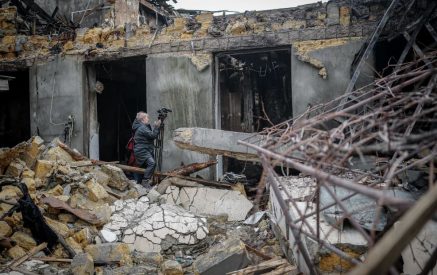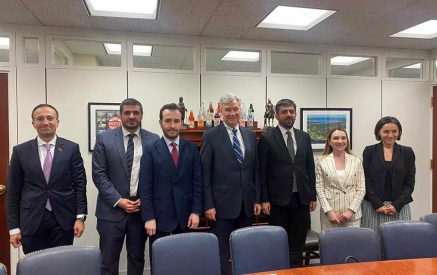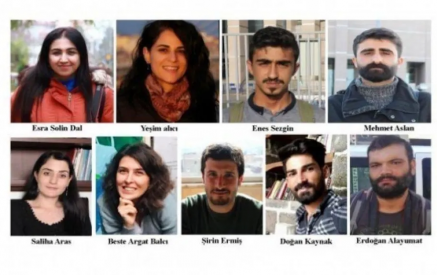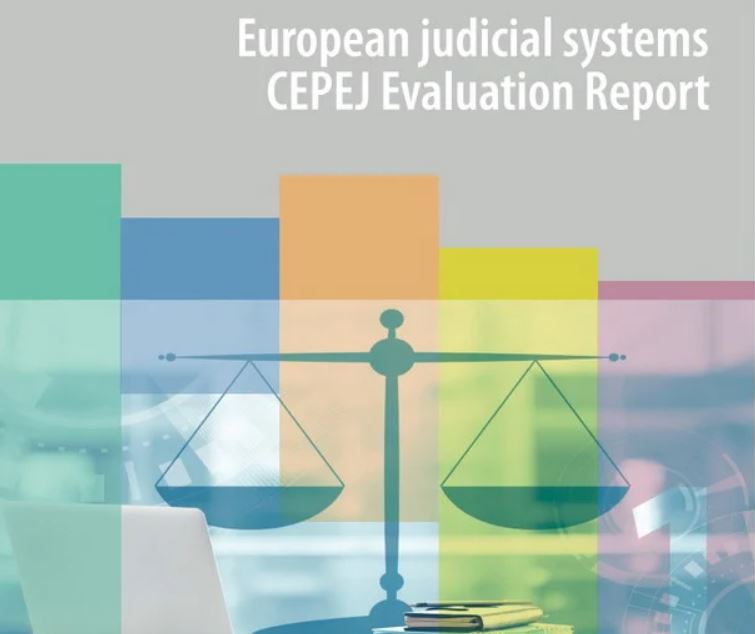The Council of Europe’s Commission for the Efficiency of Justice has published this week a new report comparing the situation in the judicial sector in 44 member States of the Council of Europe, including Armenia. The report is based on 2020 data.
Judicial system budget:
P.22: “Between 2018 and 2020, Armenia, Bulgaria and Malta’s judicial system implemented budgets grew the most. “
P:26 “The strongest increases in the courts budget are registered in Malta (+51%), Armenia (+47%, +70% in local currency), Albania (+39%, +29% in local currency) and Poland (+24%, +33% in local currency). Armenia’s budget increased, namely due to the establishment of a bankruptcy court and the modernization of courts’ computer equipment.”
Read also
“Despite the increase notably due to increased spending on salaries and computerisation, the budget for courts in Armenia remains one of the lowest in Europe”.
Legal aid
P.37: “Armenia, Azerbaijan, Cyprus, the Czech Republic, Romania, Morocco, and Kazakhstan do not evaluate assets and income when granting legal aid.”
Ratio of female judges and prosecutors
P. 69 (percentage of female judges): “In contrast, the ratio of women is still below 40% in Armenia, Azerbaijan, Ireland, UK – Northern Ireland, UK – Scotland and Morocco. In Albania, Armenia, Azerbaijan, Georgia, the Republic of Moldova, Türkiye and Morocco, on the other hand, the percentage of female prosecutors is below 40%”
Number of lawyers
P.85: “The figures in Armenia, Azerbaijan and Finland increased by more than 100% between 2010 and 2020”
Number of general jurisdiction courts per 100,000 inhabitants and per geographic location
P.94: “For example, in Armenia, Denmark, Finland, France, Ireland, the Netherlands, Sweden and UK-Northern Ireland, the number of first and second instance courts of general jurisdiction per 100,000 inhabitants (legal entities) is meaningfully below the respective European medians.”
P.98
“Between 2018 and 2020, the average number of professional judges per geographic location has remained stable. An increase is observed in 21 States and entities. The most significant increases are observed in Croatia (42%), Finland (36%), Greece (34%), Montenegro (56%) and Türkiye (12%), the other increases being mainly below 10%. Conversely, the most important decreases are to be noticed in Armenia (-69%), Austria (-33%) and Poland (-20%)”
Deployment of advanced ICT tools
P.118:
“Furthermore, the focus is placed on advanced developments and not on the basic ICT tools. Figure 4.3.7. provides a map with the ICT index scores of member States and other entities. Estonia, Latvia, Hungary, and Türkiye scored particularly high, with values above 9. On the contrary, Armenia, Cyprus and UK-Northern Ireland and UK-Scotland scored particularly low, below 3 points.”
Efficiency and quality of justice in Europe: Council of Europe publishes its 2022 report
Strasbourg, 05.10.2022 – In a report, country profiles and an interactive database (all publicly available), the Council of Europe’s European Commission for the Efficiency of Justice (CEPEJ) sets out the main trends of the judicial systems of 44 European countries and 3 observer States (*).
This tenth evaluation report since CEPEJ was established in 2002 shows in particular the following trends:
Regarding the budget allocated to justice:
- between 2010 and 2020, states show a steady but uneven increase; in 2020 they spend on average €79 per inhabitant on the judicial system (i.e. €7 more than in 2018);
- 66% of this budget are allocated to courts, 24,5% to prosecution authorities and 9,5% to legal aid;
- between 2018 and 2020, the most significant percentage increase, equal to 12% on average, has been recorded for the public prosecution budget;
- the growing trend towards outsourcing certain services is reconfirmed in 2020;
- East European countries spend proportionally more on prosecution services, while Northern European and Common Law countries invest relatively more in legal aid;
- all the countries have a legal aid mechanism for criminal and other than criminal cases to ensure access to justice for all, complying with the European Convention on Human Rights and the case law of the Court.
Regarding justice professionals and the courts:
- the number of professional judges in the member States and entities has slightly increased (the average being 22,2 judges per 100 000 inhabitants) with significant disparities between the states and entities that can be partly explained by the diversity of judicial organisations, geographic factors and/or the evolution of European legal systems;
- for several years now, there have been more female than male judges and prosecutors; at the same time, the glass ceiling, i.e. an underrepresentation of women in the highest functions, is still present; however, there are some promising developments and inspiring examples to facilitate women’s careers and promote gender balance in the higher and highest judicial functions; European lawyers are still predominantly male but shifts in favour of women are also visible in this area; the number of lawyers is still increasing in Europe (the average number in 2020 is 172 lawyers per 100 000 inhabitants) but the density of lawyers varies greatly from one state to another;
- the ratio between salaries of judges and average national salaries shows significant disparities in Europe: from 1.0/1.7 in Germany (at the beginning/the end of the career) to 6.8/21.6 in Ukraine (at the beginning/the end of the career); the same goes for public prosecutors: from 0,8 in Ireland to 4,1 in Albania at the beginning of the career and from 1,7 in Germany and Luxembourg to 7,8 in Georgia at the end of career; in general and for different reasons, public prosecutors’ salaries are lower than those of judges;
- between 2010 and 2020 the number of courts is decreasing in Europe, and the specialisation of courts has still been a strong trend, even if it has been slowed down in 2020.
Regarding justice users:
- the Covid-19 pandemic reinforced the central place of the users in the justice system, implying new challenges to access justice, new ways of communication and delivery of judicial services and acceleration of the digitalisation of justice;
- more and more states adapt the specific information to the different categories of users, in particular the most vulnerable;
- more resources and staff should be devoted to a better communication with users of justice in order to further improve access to justice and trust in the judicial system;
- court users’ satisfaction data can be used to provide a better and more efficient service of justice and to design solutions to increase the legitimacy of judicial systems.
Regarding information and communication technology (ICT):
- CoE member States and entities increasingly deploy ICT to support judicial activity and they allocate a greater percentage of courts’ budget to computerisation compared to previous years;
- the challenges posed by the Covid-19 pandemic have provided an opportunity to experiment on a broader scale and at a faster pace with the potential of ICT for the communication and sharing of judicial documents; this has required much adaptation to balance the practical advantages of remote communication with the need to respect the fundamental values of justice, ensuring fairness, transparency, accountability, preventing procedural abuse, and avoiding the risk of compromising the human and symbolic faces of justice.
Regarding the performance of judicial systems:
- because of Covid-19 restrictions, courts throughout Europe encountered problems in executing even routine operations; however, not all jurisdictions were impacted in the same manner as states and entities resorted to various innovative measures to mitigate the Covid-19 effects;
- first instance courts were impacted the most by the pandemic; the second and third instances were more efficient although achieved somewhat lower results in comparison with 2018;
- courts seem to be fastest in resolving criminal law cases while in the administrative matters they are seen as the least efficient;
- in the majority of the states and entities, prosecutors improved the results presumably due to the decrease in the number of new cases caused mainly by the Covid-19 pandemic measures;
- in 2020, the number of incoming cases relating to asylum seekers and to the right of entry and stay for aliens has decreased, even though it remains high.






















































